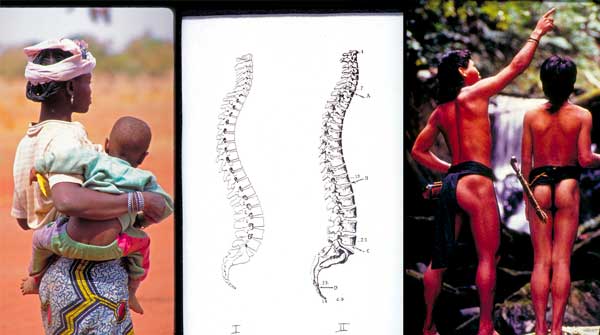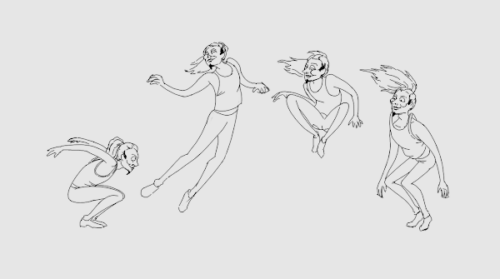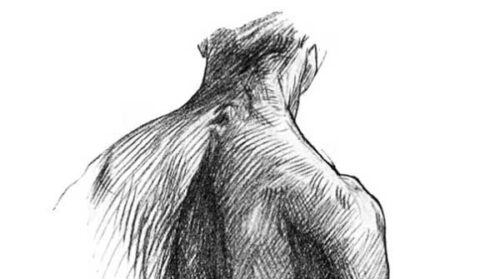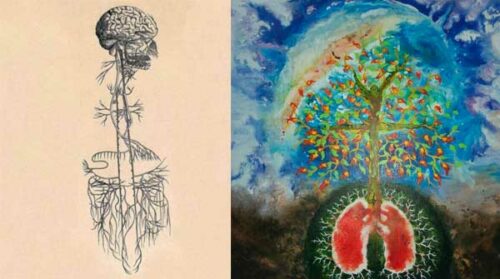The word posture is derived from the Latin verb ponere, meaning “to put or place.” The word analysis comes from the Greek word analyein, meaning “to break up.” Therefore, postural analysis is simply the process of “breaking up” the body to determine where it should be “put or placed.”
When a vehicle’s alignment is off, it manifests as uneven tread wear and loss of tire life. Likewise, when a car’s tires are not balanced properly, ride quality is diminished, tire life is shortened, and bearings and shock-absorber performance suffer. When range of motion, pain, organ dysfunction, and joint, tendon, ligament and muscle stress.The body, like tires, has an ideal position. It also must be balanced to run smoothly and last a long time. For a mechanic to assess and adjust the front end of a vehicle, they must first check wheel positioning for deviations from the norm. To do this, they set the wheels in a standard position and conduct an evaluation. In massage terms, this is the equivalent of taking a postural analysis. A mechanic’s objective findings also are reported in terms we can relate to the body.
For example, what the mechanic refers to as “toe-in or toe-out” is what we call “internal or external rotation.” What a mechanic calls “camber,” we call “tilt.”When we report to a mechanic that the tire tread on our vehicle is wearing unevenly and the steering wheel is vibrating, we have given our subjective complaints. The mechanic hears this complaint frequently and knows exactly what needs to be done. Before they can conduct their evaluation, however, they need to use the proper equipment to access and design a repair plan according to the car model’s specifications.In the same way, clients often make subjective complaints to us about headaches and neck and back pain. Just like a mechanic, we need to use the proper equipment to access and design a customized therapy session to meet each individual client’s needs, focusing on both short- and long-term goals. The breathing patter of the client will also determine posture.
What you will learn:
Running order:

Primal posture: Ubong tribesmen in Borneo (right) display the perfect J-shaped spines. A woman in Burkina Faso (left) holds her baby so that his spine stays straight. The center image shows the S-shaped spine drawn in a modern anatomy book (Fig. I) and the J-shaped spine (Fig. II) drawn in the 1897 anatomy book Traite d’Anatomie Humaine
Original price was: £99.00.£49.99Current price is: £49.99.Add to basket
What they said:
“This made me think about lots of things – both physical and mental. I have learnt to stay open to everything and consider the three sides of the coin.”
“I have learnt some great reset movement exercises, which I will apply in between traditional exercises recognising the emotional patterns of posture.”
“I know I will use the material from this course and apply it to clients.”
“This has opened my mind to seeing people in a different, deeper way. It has boosted my confidence and motivation and I can apply this to so many of my clients.”
“I have learnt how important breathing is to body movement and connection. How mental status has an impact on the body and movement, and to stop doing what I have always done.”
“I have learnt to consider the emotional attachment to the muscular structural imbalances of the body.”
Terms and conditions: This programme is non refundable and non transferable
By purchasing this product I hereby agree to the following:
1. I am participating in classes or services during which I will receive information and instruction about movement and health. I recognize that movement requires physical exertion, which may be strenuous and may cause physical injury, and I am fully aware of the risks and hazards involved.
2. I understand that it is my responsibility to consult with a physician prior to and regarding my participation in any physical fitness program. I represent and warrant that I have no medical condition that would prevent my participation in physical fitness activities.
3. In consideration of being permitted to participate in the movement programme, I agree to assume full responsibility for any risks, injuries or damages, known and unknown, which I might incur as a result of participating in the program.
4. In further consideration of being permitted to participate in the movement classes, I knowingly, voluntarily, and expressly waive any claim I may have against the instructor, the owner, or the leaseholder of the building for injuries or damages that I may sustain as a result of participating in classes or workshops held at Common Ground.
5. That if I participate in other classes or events or movement that I will also assume full responsibility for any injuries that may result from my participation, with the same considerations that this waiver stipulates for movement (items 1-4 above).



